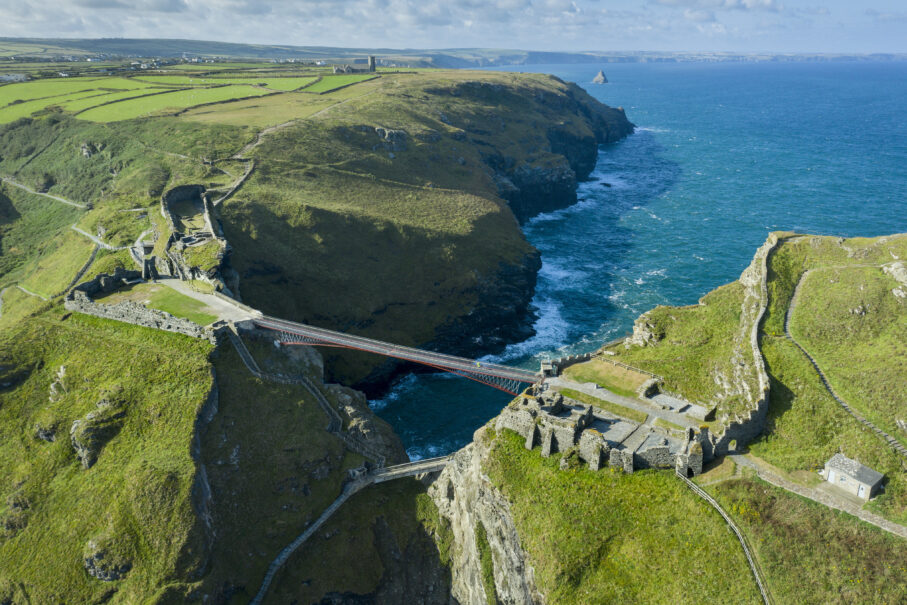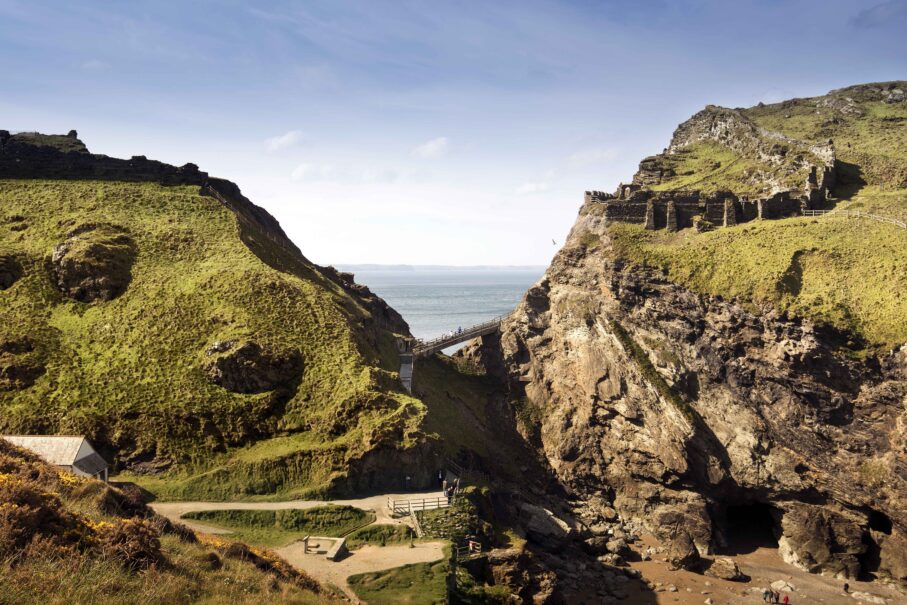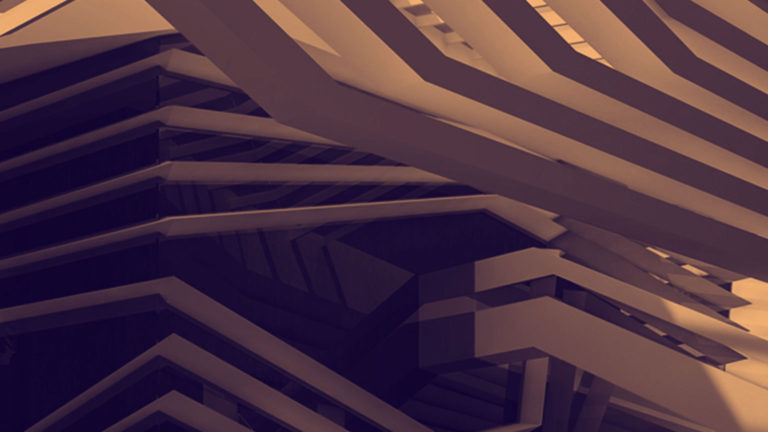
Six years after the original competition launched, as Tintagel Castle Footbridge is shortlisted for the RIBA Stirling Prize 2021, MRC can’t resist cheering on Ney & Partners, William Matthews Associates and English Heritage — what an extraordinary feat they have pulled off.
The Tintagel Castle Bridge Design Competition was an exceptional initiative by English Heritage that resulted in fascinating, not to say paradigmatic, choices for the competition jury. One hundred and thirty-seven design teams competed from almost thirty countries.
The finalists included luminaries such as Dietmar Feichtinger Architectes with Terrell; Marks Barfield Architects with Flint and Neill; former Stirling Prize nominee, Niall McLaughlin Architects with Price and Myers; RFR and Jean-François Blassel Architecte with EngineersHRW and WSP; and former Stirling Prize winner, WilkinsonEyre with Atelier One.
But Ney & Partners and William Matthews Associates won with an icon: ingenious, daring, and with a showstopping metaphor: a gap between the two cantilevers, mid-air (circa 28 metres higher than the old crossing). Competition designs often evolve, sometimes radically, but this proposal was almost perfectly conceptualised. Even now, it can be hard to distinguish the photos of the built bridge from the competition renders.
Reviewing the Stirling Prize’s contenders in this most difficult year, it is apparent they are all brilliant in their own way; the finalists excel in contrasting sectors.
But the act of creating a bridge over a void must have an existentialist advantage, surely? Isn’t architecture essentially a response to the natural environment, to a shared cultural heritage and sustainable only when serving upcoming generations? At its very best, shouldn’t architecture be a spine-tingling and life-enhancing experience?
A few more arguments:
- There’s no structure more hopeful than a bridge.
- There’s no setting more zeitgeistian or global (see G7) than Cornwall in 2021.
- Here is inclusivity — a world in microcosm now open to those who could never have visited before or may have visited almost a lifetime ago.
- No project has a better claim to myth: through an engineering lens, through a visual lens (the mind immediately superimposes the new bridge on old photos), to the enchanting gap with Merlin on hand.
To address any sceptical architect face-on. It’s true that at Tintagel there’s no spatially intricate floor plan or artful interiors; there’s no civic grain to jive with, or metropolis sitting on the bridge’s shoulder; put bluntly, it offers no shelter from the elements or place to dwell when the wind is up.
Instead, Tintagel Castle Bridge is a pure structure, one absorbed in a glance (and what a glance).
We can’t think of any counter arguments. So go Tintagel Castle Bridge, impress those Stirling Prize judges, make them taste the salt, feel the sun, wind, mist and rain!
The original competition can be revisited here.

The view before the bridge arrived.

